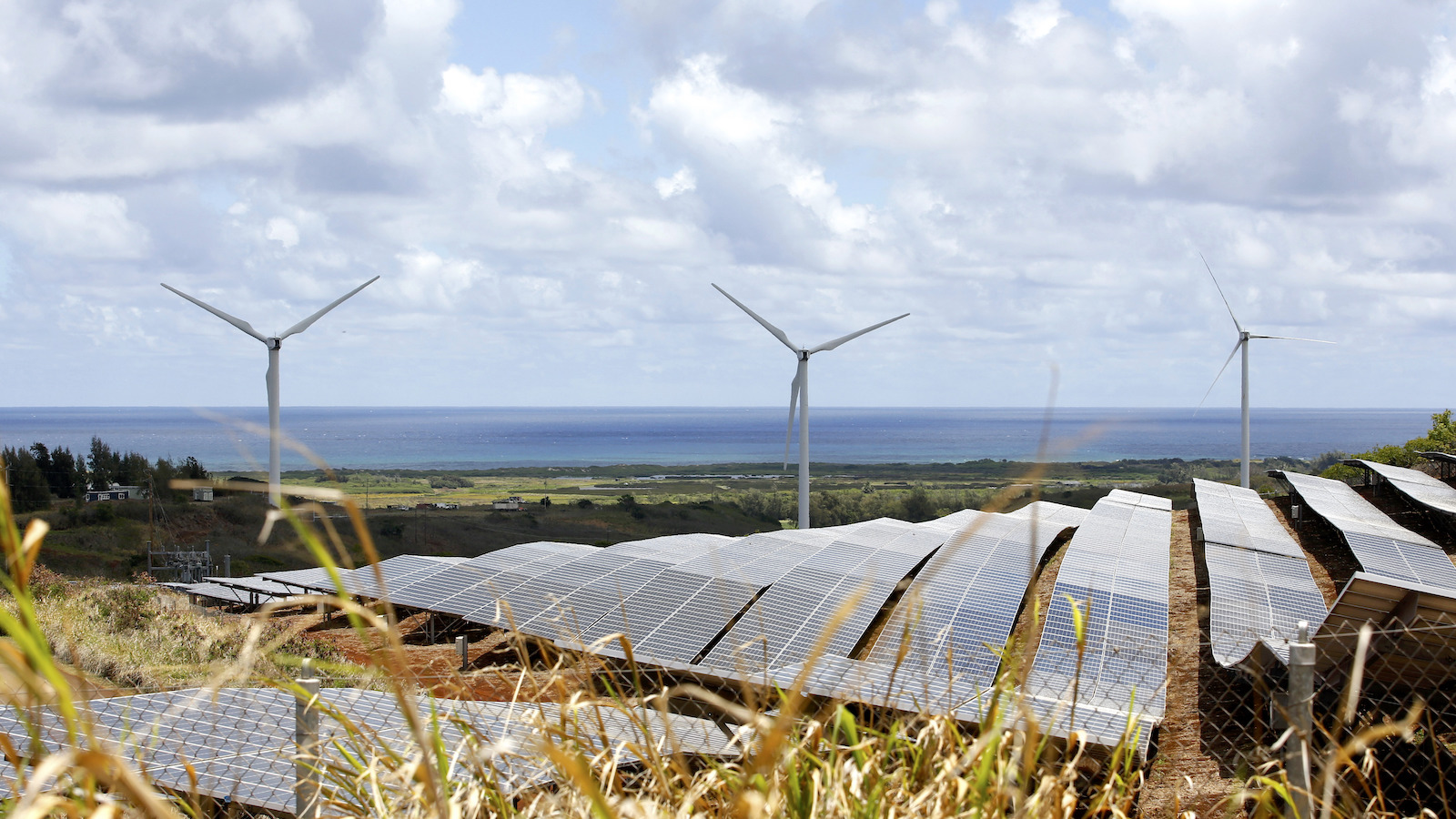It’s been nearly a year since Democratic lawmakers pushed the first new climate spending legislation in more than a decade over the congressional finish line. The Inflation Reduction Act of 2022, or IRA, includes $369 billion in clean energy tax credits and funding for climate and energy programs, money that is already trickling into the economy as federal agencies begin to distribute it.
The Biden administration said the bill will help deliver on the president’s pledge to cut the United States’ emissions in half by 2030, and independent analyses estimated that it would help slash domestic emissions by 43 to 48 percent below 2005 levels by 2035. Now, researchers have made an updated prediction. The Rhodium Group, an independent analytics firm that tracks greenhouse gas emissions produced by the U.S. economy, published a report on Thursday that shows just how much climate progress the IRA will usher in — and where the legislation will fall flat.
“Nearly one year after it passed, the IRA’s effects are coming into clearer focus,” a spokesperson for Rhodium Group said.
The report, the ninth edition of Rhodium’s annual emissions assessment, found that the IRA and state-level climate bills that have been signed into law by governors across the country in recent years will drive emissions down between 29 and 42 percent in 2030, compared to 2005 levels. By 2035, greenhouse gas emissions will decrease between 32 and 51 percent. Prior to the IRA’s passage, the nation was on track to cut emissions by 26 to 41 percent by 2035, according to Rhodium’s estimate from 2022. Rhodium called the overall reductions “a meaningful departure from previous years’ expectations for the U.S. emissions trajectory.”
Thanks to the IRA’s subsidies, solar and wind energy are already becoming a lot cheaper: solar by nearly 40 percent and wind by 55 percent. The legislation will also influence the speed with which electric vehicles replace gas-powered cars. In 2035, electric vehicles will comprise between one-third and two-thirds of all passenger car sales, the report said. That’s meaningful progress, but the emissions reductions aren’t steep enough to get the U.S. fully on track to meet its pledge to reduce emissions 50 to 52 percent by 2030 under the Paris Agreement, the 2015 international treaty on climate change that aims to keep global warming below 1.5 degrees Celsius (2.7 degrees Fahrenheit).
That’s because federal policy levers are only one piece of the decarbonization puzzle. A number of other factors could influence the speed and extent to which renewable energy technologies replace oil, coal, and gas, including how the industrial sector behaves and whether states continue to pass ambitious climate policies.
And because the IRA revolves around incentives for clean energy, rather than penalties for fossil fuel use, some of the factors impacting the speed with which the economy decarbonizes won’t be influenced by the federal legislation.
For example, Rhodium projects that natural gas, which made up roughly 36 percent of the nation’s power mix in 2022, will comprise 6 to 29 percent of the power supply by 2035, depending on whether utilities take advantage of the incentives in the bill and what types of renewable energies are feasible in their markets. Natural gas, a cheap source of energy, surpassed coal as the nation’s leading source of electricity in 2016. Despite the incentives in the IRA, gas is still abundant, affordable, and here to stay for the foreseeable future.
In New York City, a city that has positioned itself as a leader in the green transition and has vowed to reduce fossil fuel use 80 percent by 2050, environmental activists successfully lobbied for the closure of the nearby Indian Point nuclear plant, which prompted the city to temporarily rely on natural gas-powered plants as it works to build infrastructure that can funnel hydropower from Canada to Queens.
Over the course of the next decade, policymakers, regulators, and utility executives will weigh similar trade-offs between cost, climate impact, and public opinion across the country, and they won’t all choose the same path. That will result in a patchy network of green and dirty electricity. The ranges presented in the new Rhodium report account for that patchiness.
But they also show that the IRA is making a difference. “Though there’s uncertainty on just how fast the U.S. scales up renewable energy on the grid or EVs on the road, those levels of deployment would be meaningfully lower than what we’re estimating in our modeling under otherwise the same conditions absent the IRA,” Ben King, lead author of the report, told Grist.
In order to continue making progress on climate change, Congress will likely need to pass additional climate laws, including legislation directed at hastening the permitting process for new large-scale renewable energy projects, beefing up the green energy workforce, and resolving kinks in the supply chain that are hamstringing green technology deployment. That has become harder to do since Republicans retook control of the House of Representatives in January.
The goals of the Paris Agreement are still within reach, the report reads, “but getting there won’t be easy.”



